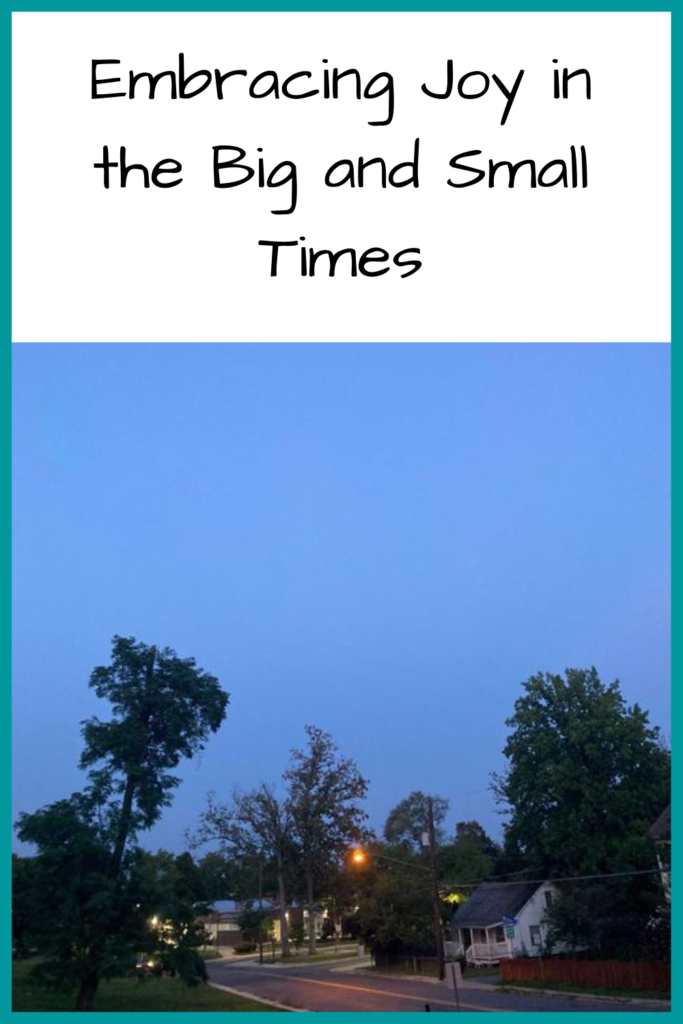
“Look, there’s a bat!” I exclaim, my finger moving as a dark silhouette flits across the sky. My younger son and I are sitting on the back steps of our deck, looking up into the darkening night sky.
“There’s another one!” he points out.

“Look, there’s a bat!” I exclaim, my finger moving as a dark silhouette flits across the sky. My younger son and I are sitting on the back steps of our deck, looking up into the darkening night sky.
“There’s another one!” he points out.
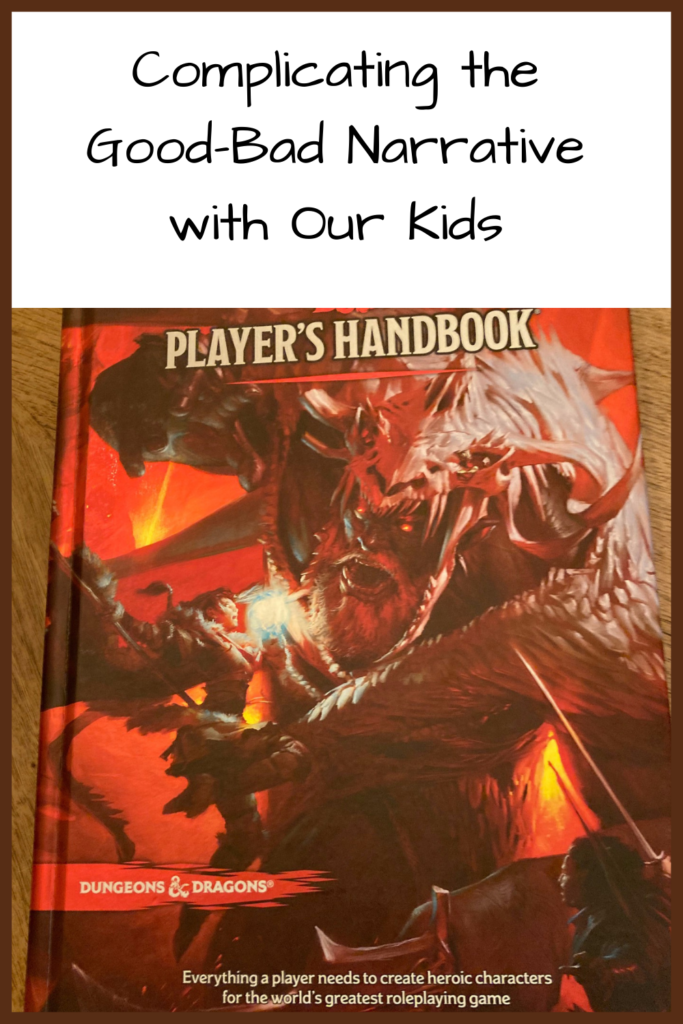
“So Bowser would be chaotic evil, right?” my older son asked as we sat on our front steps, referring to the villain of his favorite Mario Bros video games.
“Hmmm, I think so. He just wants to cause chaos and hurt people rather than follow any laws while doing so. Maybe neutral evil,” I replied, talking in terms of the alignment chart from Dungeons and Dragons.
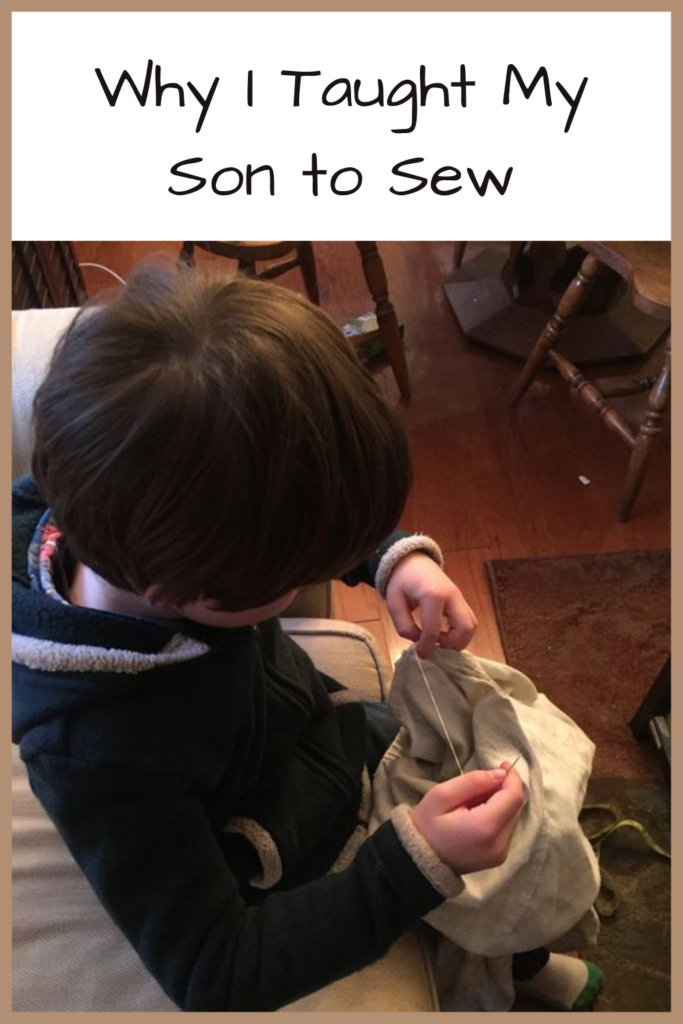
Reaching up in my closet for my sewing bag, I asked my then-six year old son, “Do you want me to teach you how to sew?”
“No,” he said, with an edge in his voice of “And why would I?”
But as I settled down on the couch, his attitude shifted. He wandered over, asking, “Can I see what you’re doing?”

“You were Real to the Boy,” the Fairy said, “because he loved you. Now you shall be Real to every one,” I read, sobbing by the end of the line.
Honestly, I didn’t expect to cry. I didn’t expect The Velveteen Rabbit to be one of Those Books, the ones that dissolve me into a puddle of tears.
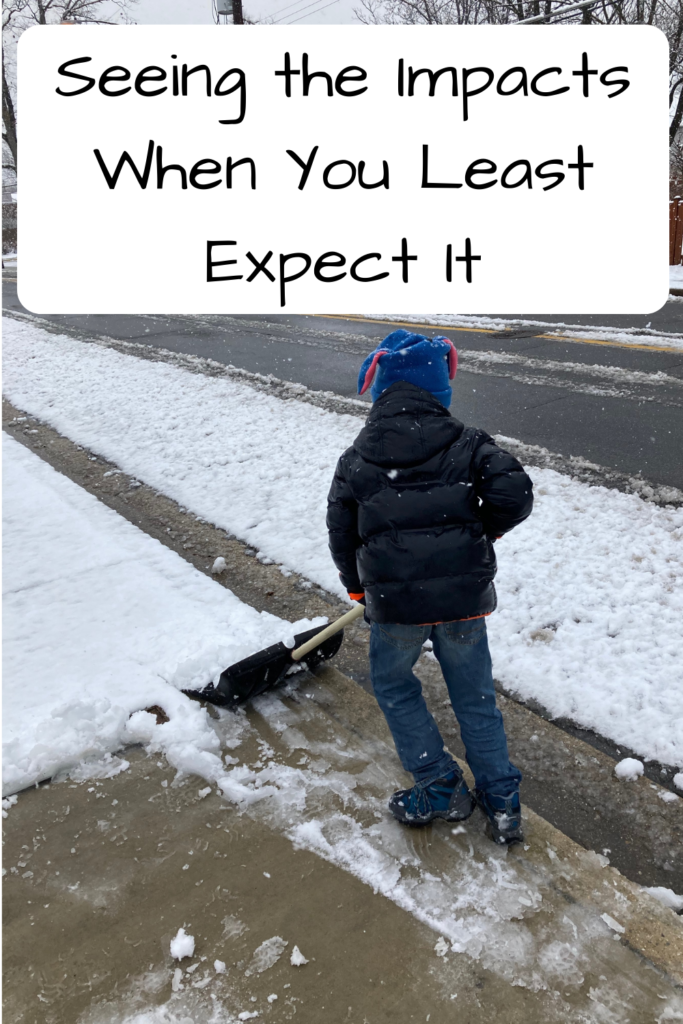
“I want to help!” my older son declared, in that way he does when he feels like life has dealt him a terribly unfair hand.
“Oh! Sure,” I said, handing him the snow shovel. We were clearing the sidewalk of snow, in one of the few times a year Washington D.C. gets it.
Both his tone of voice and demand to help surprised me. He’s a kid for whom chores are like pulling teeth. So volunteering for a hard job that meant I did less work? Excellent. I did want to give him a heads-up though. “The snow is pretty tough to shovel, as there’s a layer of ice underneath. From when we had the freezing rain last night. So try to get under the ice, if you can.”
As he managed the big shovel awkwardly, I tried to both hold my tongue and figure out what inspired this burst of enthusiasm.
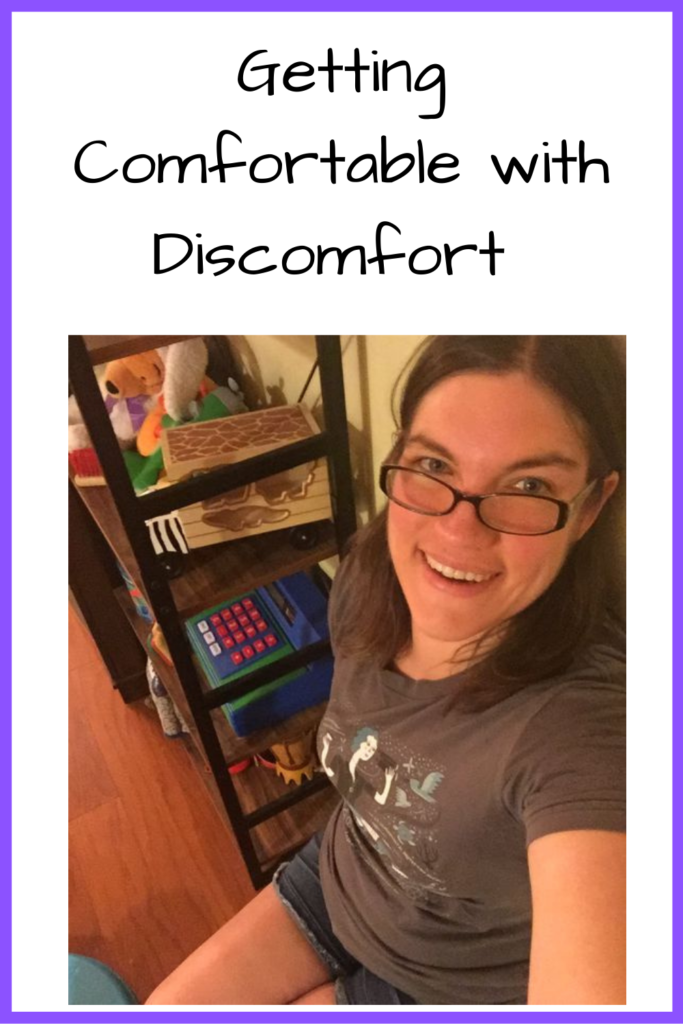
“Hold it! Hold it!” my prenatal yoga teacher encouraged the class as we all struggled to keep our backs to the wall and our knees bent. Those three minute wall sits felt like an hour. But they weren’t meant to be easy. They were meant to teach us how to okay with being uncomfortable.
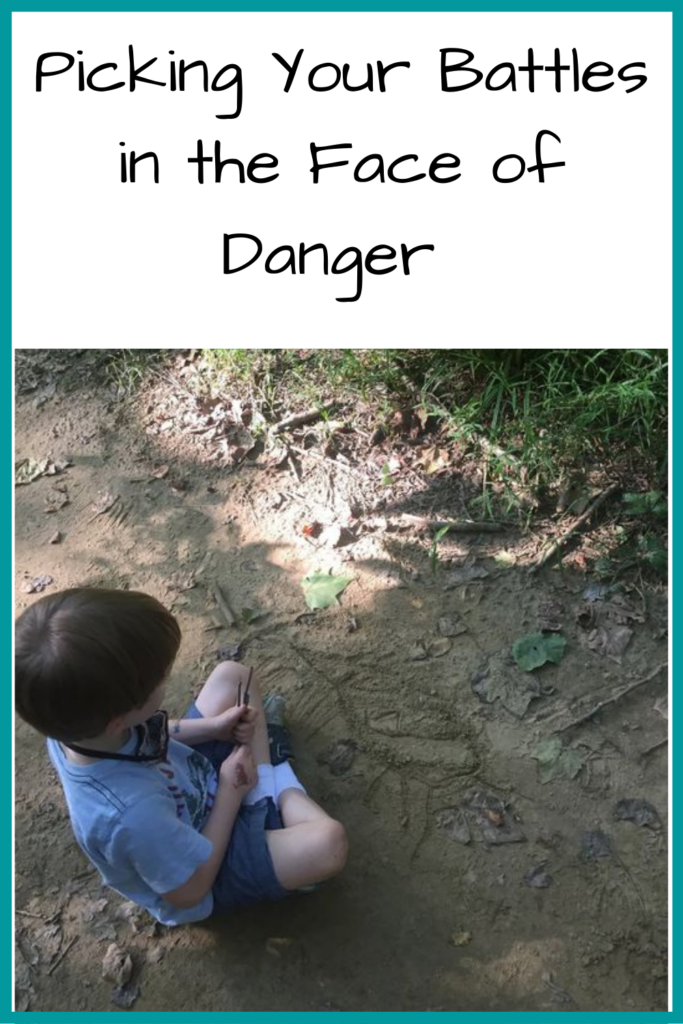 13
13
“I saved your life! I should be able to choose for just one day,” my seven year old declared.
He had a point.
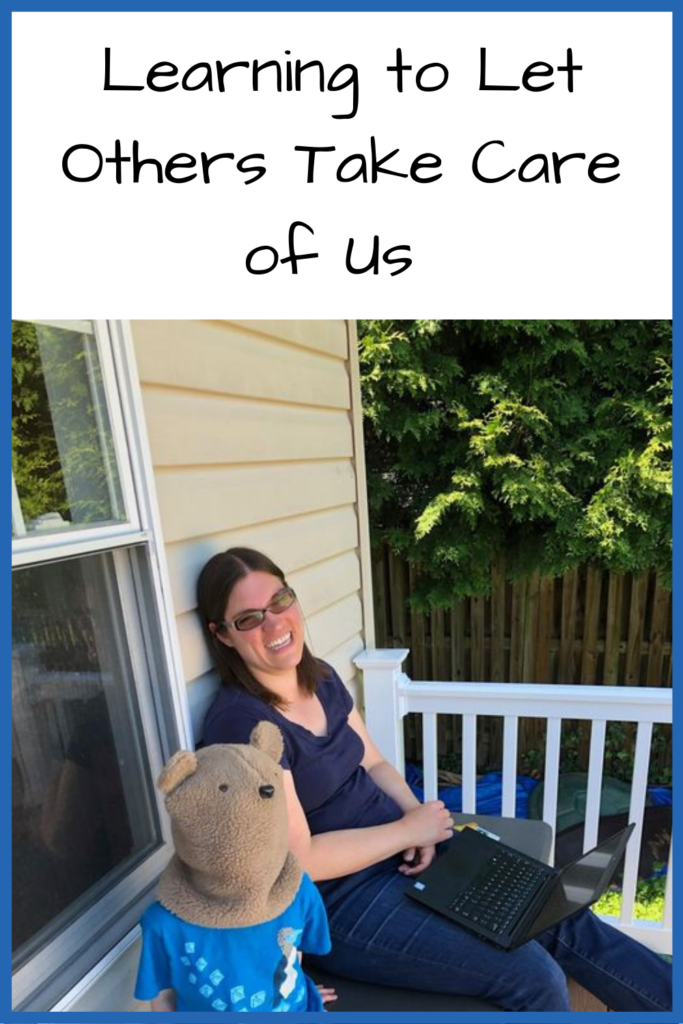
“Just let me take care of you!” I yelled at my four year old as I chased him around our beanbag chairs. I was trying to get him to let me put a cold-pack on his forehead, which was rapidly developing quite the goose egg.
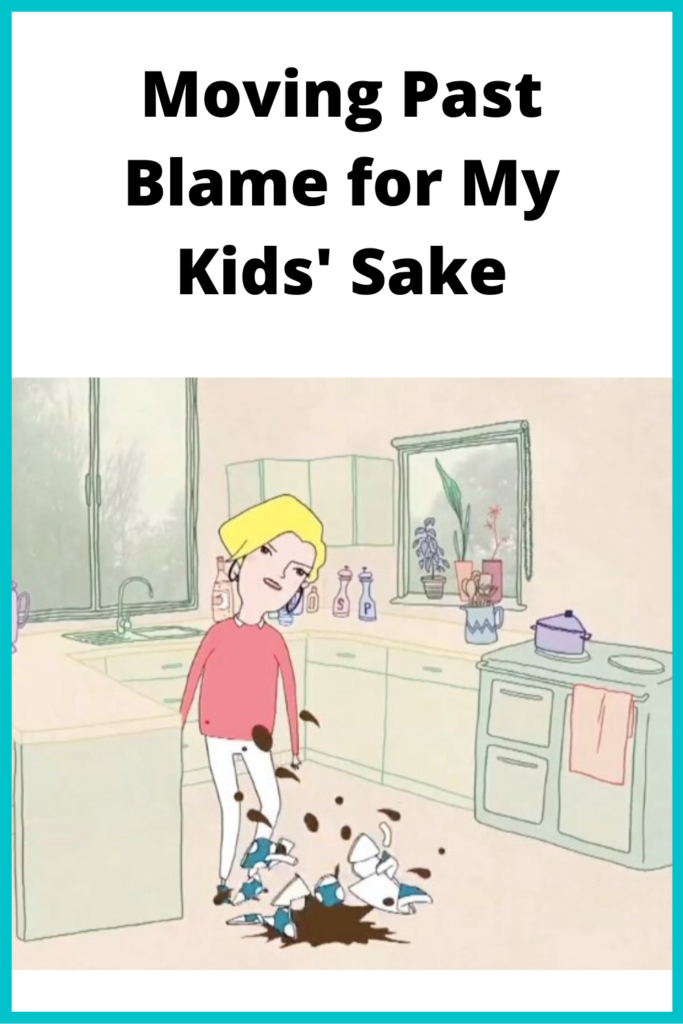
“It doesn’t really matter whose fault it actually is, we need to clean it up together,” I said to my kids, talking about some mess or another. I heard those words come out of my mouth as if I actually believed them. But I did really want to believe them.
I am a blame monster. If there’s blame to put on someone – even myself – I am on the case. I used to think that if you could blame someone for a problem, they would learn their lesson and not do it again.
Problem solved, right? Uh, no.

Big world events – like COVID-19 (coronavirus) and climate change – can drive us to despair. I’ve semi-seriously joked that my anxiety about climate change has at least prepared me for this outbreak. But I’ve also learned that there are a couple of ways to react to these big world events, some of which are mentally and emotionally healthier than others.
In a study by a Swedish University that I found in my book research, researchers found that teenagers reacted to climate change in three ways: “emotion-focused,” “problem-focused,” and “meaning-focused.”